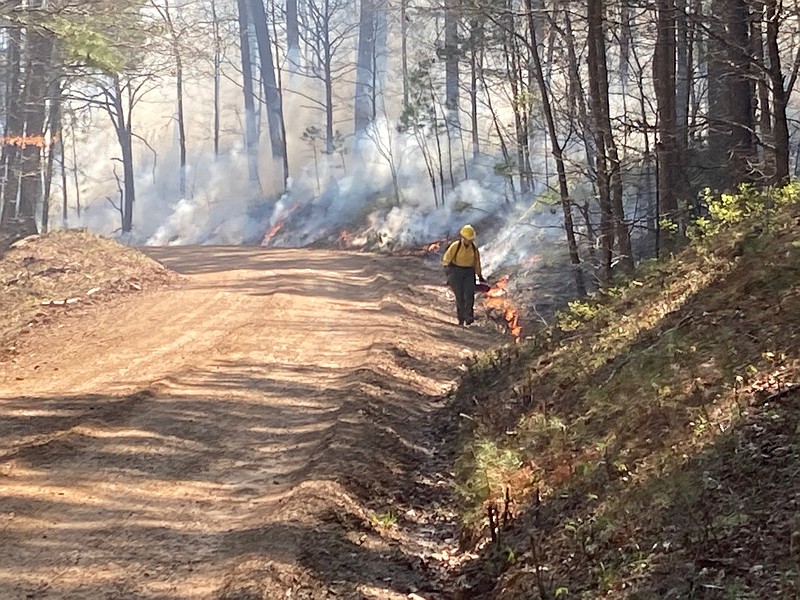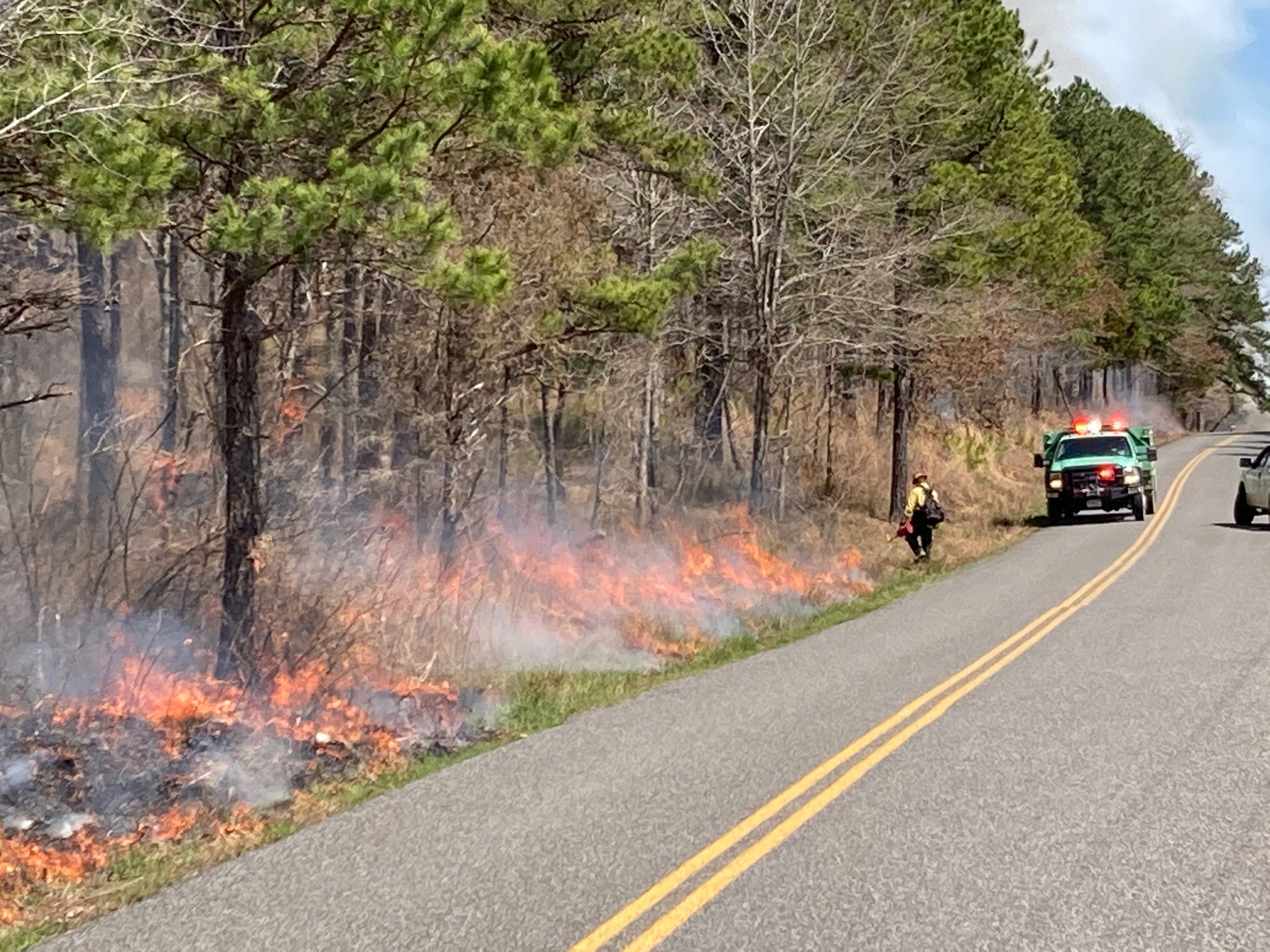Residents across the western edge of Garland County likely noticed heavy smoke over the weekend as the U.S. Forest Service conducted prescribed burns inside Ouachita National Forest.
Over 7,000 acres of brush were cleared by the prescribed burns locally in two of 12 areas that were burned over the weekend, according to Josh Graham, the forest's Fire Management Officer.
"We burned 26,897 acres on Sunday between the Ozark National Forest and the Ouachita," he said. "We had four helicopters burning roughly one to two units per helicopter."
The reason for the prescribed fires is to help rejuvenate the forests and to reduce the threat of wildfires.
"Burning it this time of year is a low- to moderate-intensity burn, so it doesn't burn deep into the soil causing runoff issues," Graham said. "As you know that's a heavily recreated lake, and the chances of a wildfire due to campers camping along the lakeshore is high. And if we burn between three and four years, those fuels are reduced and the severity of wildfire is reduced significantly. And that helps run off ... rejuvenates the soil, puts nitrogen back in the soil, and really stabilizes the ground."
Graham said the Forest Service has "a large fuels program," referencing the fuels management program the organization has to help reduce the threat of wildfires.
"Here in the South, we do a lot of fuels reduction during this -- what we call the dormant period where it's before green up where we can get a lot of that hazard fuels consumed by prescribed fire," he said. "We have about 3.1 million acres between the two national forests, and we try to do 5-10% of that every year."
The two local areas burned included the Vanderslice area in the Jessieville Ranger District and part of the Bear Mountain area in the Womble Ranger District which includes part of the Lake Ouachita Vista Trail. Graham said the Vanderslice area consisted of 6,721 acres of burned land.
"That's a large burn for us," he said. "It's a large burn for the country, actually. I couldn't tell you what the average was, but there's several burns that are a couple hundred acres or maybe 1,000 acres.
"I know the Fillimore district today is burning a 1,300 acre fire, and they're lighting it by hand -- all hand ignitions. It's just easier to do the larger burns using a helicopter than getting boots on the ground and walking that fire down the ridges."
Graham explained fires started by the helicopters use "a plastic sphere device" similar to a pingpong ball that contains potassium permanganate that is injected with glycol and dropped into the forest.
"Within 20 seconds, that ball ignites after dropping from the helicopter," he said. "So what we'll do is we'll fly all of the ridges with the helicopter dropping those balls ... on top of all the ridges and that gets the fire going."
The Forest Service primarily uses "backing fires" to clear brush, which is a low-intensity fire.
"If you were up there and the fire was there, you could step over it," Graham said. "It just consumes the leaf litter, and it destroys the cambium of those smaller brush types. It doesn't burn them or ignite them into large 10-, 20-, 30-foot flame lengths. You're looking more at one- to two-foot flame lengths that are pretty calm and backing evenly down the slope."
While the general rule of thumb for the start of "green up" is mid-April, the lower elevations of the forest are already experiencing budding and the emergence of leaves.
"We're about two to three weeks early this year for the green-up process, and that just means the leaves and the grass -- the leaves start coming on, and the grass starts turning green," he said.
"It really slows down our prescribed fire season, and by April 15, usually in my mind, we're almost done, if not done, with our prescribed fire. ... The lower elevations will green up earlier, where Mount Magazine for the state of Arkansas will be the last to green up."
The Forest Service is in a rush to try to get as much of its planned burns completed due to January and February being such wet months. While the organization aims to complete 200,000-300,000 acres of prescribed burns each year, Graham said it would "be lucky to get 220,000, looking at the weather forecast for this week and green up coming early."
"We got a really late start," he said. "As you know, January, February was really wet, so we're way behind our target. So we're kind of in a rush. I said four helicopters -- we brought one in from Louisiana to assist us in this small window between now and April 15 and green up, and we've brought a helicopter in from Missouri as well to complement our fleet to help us in this short period of time get as much burned as we can."
Graham said while there may have been more smoke than expected over the weekend, the Forest Service follows the state's Voluntary Smoke Management Guidelines.
"We abide by all of those rules and regulations to make sure that, although the smoke is visible, it's not a health impact hopefully -- unless something goes wrong -- to the general public," he said. "We try to get that smoke up and out, so it's not an impact to public health."

